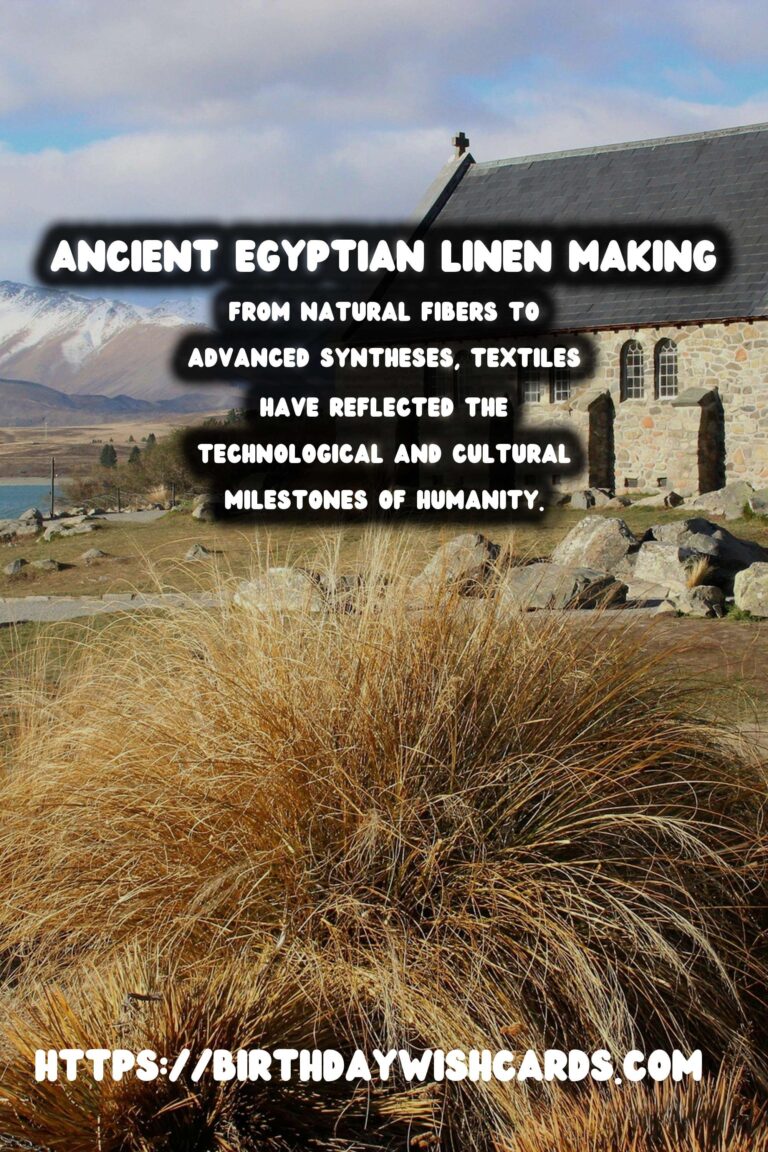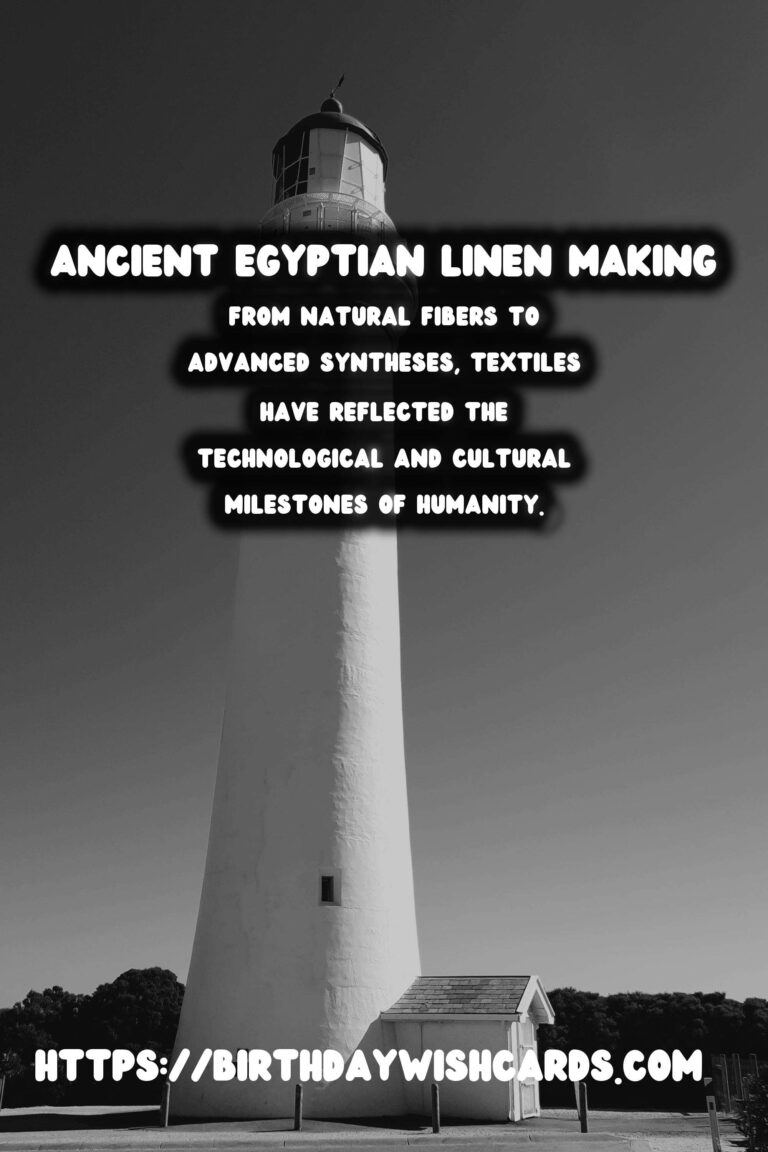
Introduction
The evolution of textiles is a fascinating journey that spans thousands of years. From the humble beginnings of hand-woven linens in Ancient Egypt to the complex synthetic fabrics of today, textiles have been an integral part of human civilization.
This article will delve into the rich history of textiles, exploring the cultural significance and technological advancements that have shaped this industry.
Ancient Textile Practices
Egyptian Linens
Ancient Egypt, a beacon of early textile craftsmanship, was renowned for its linen production. Linen was highly prized and predominantly made from flax harvested along the Nile River. Techniques of spinning and weaving were well developed, and the Egyptians created textiles from simple home wear to complex ceremonial attire.
The process was meticulous, requiring careful preparation and execution to ensure the finest quality. Linen garments not only represented an essential part of the ancient wardrobe but also a symbol of purity and wealth.
Chinese Silk
In parallel with developments in Egypt, Ancient China was cultivating silk. According to legend, silk production was discovered by Empress Leizu around 2700 BCE, marking the inception of the Silk Road trade network.
Chinese silk quickly gained an unrivaled reputation, spreading to different parts of Asia and eventually the world. Its elegance and durability made it a luxury item that enhanced the social status of its wearers.
The Middle Ages and the Renaissance
The Middle Ages saw the growth of textile trade routes between the East and the West. Wool, a staple of medieval Europe, became central to the economy. Various guilds were established to regulate the quality and trade of woolen goods, distinguishing their importance in European markets.
During the Renaissance, Italy emerged as a prominent textile hub with its exquisite velvet and brocade production. The innovation in dyeing techniques during this period also led to more vibrant and diverse textile pieces.
The Industrial Revolution
The Industrial Revolution marked a significant turning point in textile history. Mechanization introduced machines like the spinning jenny and power loom, dramatically increasing production capacities and reducing manpower needs. This industrial shift not only made textiles more accessible but also laid the foundation for modern textile engineering.
These innovations heralded the era of mass production, transforming textile manufacturing into a major economic sector.
20th Century Developments
Introduction of Synthetic Fibers
The 20th century saw the invention of synthetic fibers like nylon, polyester, and spandex. These materials revolutionized the textile industry by providing durable, cost-effective alternatives to natural fibers.
Synthetic textiles offered enhanced flexibility and durability, allowing for innovative clothing designs and applications across different industries, from fashion to aerospace.
Globalization and Modern Trends
Today, globalization allows the seamless exchange of textile goods and technologies across the globe. The current landscape of the textile industry is characterized by high-tech fabrics, sustainability initiatives, and a focus on smart textiles capable of responding to environmental changes.
Conclusion
The history of textiles is a testament to human ingenuity and adaptation. From natural fibers to advanced syntheses, textiles have reflected the technological and cultural milestones of humanity.
As we look to the future, the textile industry continues to evolve, driven by innovation, sustainability, and the ever-changing fabric of society.
The evolution of textiles is a fascinating journey that spans thousands of years. From natural fibers to advanced syntheses, textiles have reflected the technological and cultural milestones of humanity. 









#TextileHistory #AncientToModernFabrics




